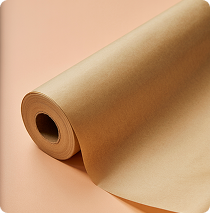How to Replace
Parchment Paper
Discover reusable alternatives that clean better and never leave you scrambling to the store.

The Problem With Parchment Paper
⚠️ Hidden Chemicals Coating Your Food
- Contains PFAS “forever chemicals” in many brands: Research shows that numerous parchment papers contain PFAS chemicals that don’t break down in the environment—the same synthetic substances found in non-stick pans you may have already replaced.
- Silicone coating releases compounds when heated: Above 200°F, the silicone coating can release chemical compounds called siloxanes into your baked goods—yet most baking happens at 350°F or higher.
- EU has concerns about siloxane safety: The European Union has classified siloxanes as endocrine disruptors requiring further study—while they remain widely used in American kitchen products.
🔥Safety Hazards in Your Oven
- Can catch fire if edges hang over pans: Many home cooks don’t realize that parchment paper can ignite on gas ranges or char and flake into food when not trimmed properly—creating a genuine fire hazard.
- May release fumes when overheated: At temperatures above its rating, parchment paper can release chemical compounds into the air—something to consider when baking with children in the house.
- Bleached versions contain dioxin residues: White parchment paper treated with chlorine may release dioxin compounds when heated, which the WHO notes are persistent environmental pollutants.
💸Expensive Single-Use
- Name-brand rolls cost 10x more than alternatives: Popular grocery store brands charge premium prices for something you use once and throw away—especially when pre-cut sheets can cost 8-15 cents each for frequent bakers.
- Regular bakers spend $50+ annually on disposable paper: If you bake weekly, the cost of constantly buying single-use parchment paper adds up to significant household expense—money that could go toward quality ingredients instead.
- Reusable silicone mats last years for same price: A set of quality silicone baking mats costs about the same as 6 months of disposable parchment but can be used hundreds of times with better performance.
🌍Teaching Kids Wasteful Habits
- Silicone coating prevents composting and recycling: Despite being paper-based, the silicone coating makes parchment paper non-compostable and non-recyclable—teaching children that convenience trumps environmental responsibility.
- Bleaching process pollutes water with toxic chemicals: The production involves harsh chemical bleaching that contributes to water pollution—exactly the kind of environmental damage we’re trying to prevent for future generations.
- Single-use mentality normalizes throwaway culture: Regular use of disposable parchment paper reinforces wasteful habits in children who learn that it’s normal to use something once and throw it away, rather than finding reusable solutions.
This content is for informational purposes only and is not professional advice. Always do your own research before making decisions. No guarantees are made regarding accuracy or outcomes.
Top Picks